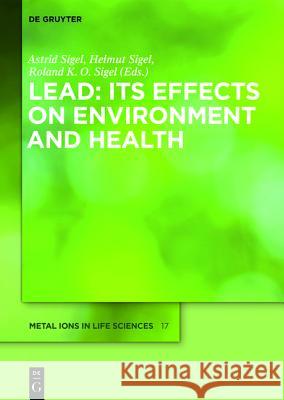Lead: Its Effects on Environment and Health » książka
Lead: Its Effects on Environment and Health
ISBN-13: 9783110441079 / Angielski / Twarda / 2017 / 596 str.
Volume 17 of the series Metal Ions in Life Sciences will be devoted to "Lead: Its Impact on Environment and Health." The topics to be covered are evident from the tentative Table of Contents. The scheduled 15 chapters will be written in an authoritatively and timely manner by internationally recognized experts. Chapter 1 will be setting the scene by providing those aspects of the chemistry of lead which are important for its impact on life and the environment. The biogeochemistry of lead, its anthropogenic release into the environment, its cycling, speciation in the atmosphere, in waters, soils, and sediments will be covered and of course, the analytical tools employed will be described; this includes fluorescent sensors, but also leadzymes and DNAzymes ... and the use of lead in batteries, etc. Its determination in blood, plasma, serum, and urine as well as in hair, saliva, and various tissues is certainly also an important topic. The properties of lead complexes formed with amino acids, peptides, nucleobases, nucleotides, and other ligands of biological relevance will be summarized for the solid state and for aqueous solutions as well. All this is important for obtaining a coherent picture about the interrelations between lead and biosystems. Other aspects are the toxic actions of lead on mammalian organs, including the effects on renal cells ... and bones, of course ... and the role that metallothioneins play in lead(II) detoxification. The toxicity of lead for plants is also covered and the lead-induced changes in the phosphorylation of PSII proteins are considered. All this and more will be dealt with in MILS-17.











